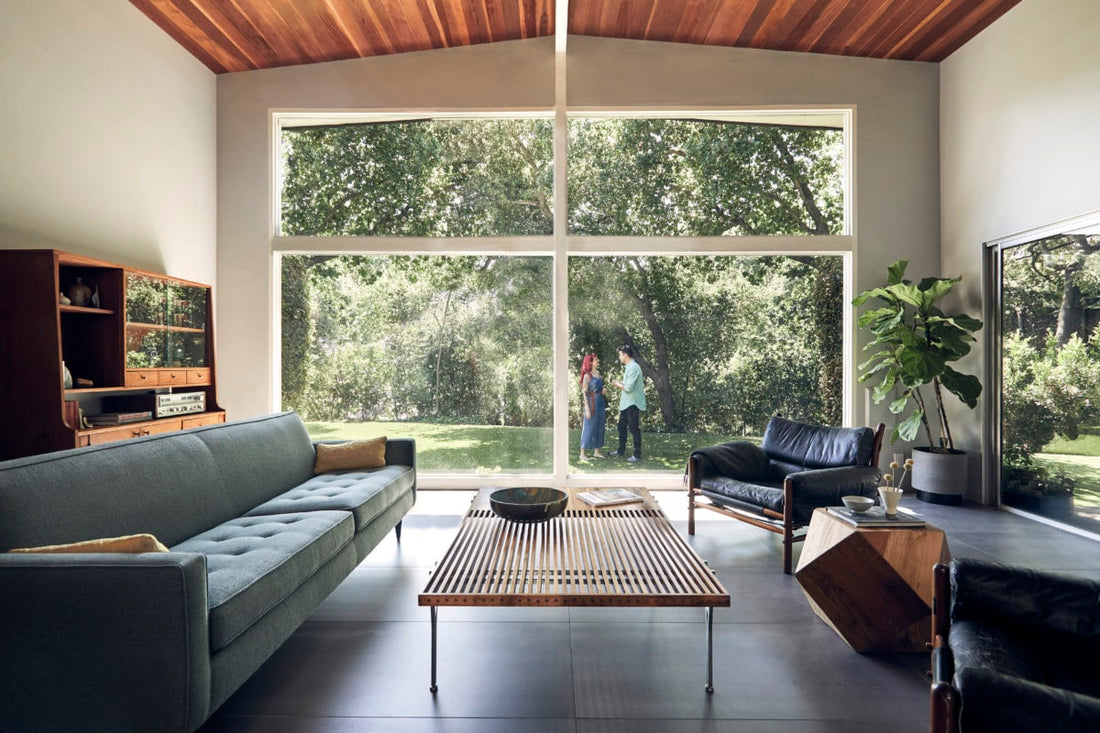
Maximizing Natural Light in Your Interiors – 10 Tips
Share
Natural light is a powerful element in interior design. It transforms spaces, elevates moods, and even boosts productivity. As we approach 2025, incorporating natural light into interior design has become more than just an aesthetic choice; it’s a necessity for creating sustainable, healthy, and inviting living spaces. This blog explores various ways to maximize natural light in your interiors, offering tips and design strategies to help you achieve brighter, more airy spaces.
Why Natural Light Matters in Interior Design
Natural light not only enhances the appearance of your space but also promotes better health. Exposure to natural light has been shown to improve mental well-being, regulate circadian rhythms, and increase Vitamin D intake. Moreover, well-lit spaces reduce the need for artificial lighting, which can lower electricity costs and reduce your carbon footprint.
For interior designers and architects, maximizing natural light is an essential part of creating sustainable, livable spaces. Here are 10 tips to bring more sunlight into your interiors, making them feel brighter, fresher, and more energizing.
1. Embrace Open Floor Plans
Open floor plans have gained significant popularity in recent years, and it’s no surprise why. By removing walls and partitions, natural light can flow seamlessly throughout the space. An open-plan layout allows sunlight to travel across the entire room, reducing the need for artificial lighting during the day. Consider using glass partitions or half-walls to maintain privacy while allowing light to penetrate deeper into the space.
Pro Tip: If you prefer to keep rooms somewhat separated, consider using transparent or frosted glass for doors and windows. This will let natural light pass through while still creating a sense of defined spaces.
2. Opt for Sheer Window Treatments
Heavy curtains can block natural light and create a dim, stuffy atmosphere. Instead, opt for sheer or translucent window treatments that allow light to filter through without compromising privacy. Sheer curtains add softness to the room while ensuring that natural light is not obstructed. If privacy is a concern, consider layering sheer curtains with lightweight, linen blinds.
Pro Tip: You can also install motorized window treatments that open and close with the touch of a button to maximize or control the amount of natural light in your room.
3. Use Mirrors and Reflective Surfaces
Reflective surfaces are an excellent way to amplify natural light. Mirrors, glass, and high-gloss finishes help bounce light around the room, making spaces appear larger and brighter. You can strategically place mirrors across from windows to reflect the sunlight back into the room, ensuring that the light is distributed evenly.
Pro Tip: Choose mirrors with slim, minimalistic frames or go for oversized mirrors to create a dramatic effect that reflects both natural light and design elements in the room.
4. Light-Colored Walls and Flooring
The color palette of your interior plays a crucial role in maximizing natural light. Lighter hues, such as whites, pastels, and soft neutrals, reflect sunlight and brighten the space. Dark colors, on the other hand, absorb light, which can make a room feel smaller and more closed off.
Pro Tip: For walls, consider using off-white tones like ivory or light gray, and for flooring, opt for light-colored wood or polished concrete to reflect more light. Even adding light-colored furniture pieces and decor can contribute to a brighter space.
5. Install Skylights and Solar Tubes
Skylights and solar tubes are innovative ways to bring natural light into areas that might not have access to windows, such as bathrooms, hallways, or stairwells. Skylights allow sunlight to enter from above, creating a flood of natural light that can brighten up the darkest corners of your home. Solar tubes capture sunlight and channel it into a room through reflective tubes, making them a great option for rooms that don't have traditional windows.
Pro Tip: Install skylights with automated features that allow you to open them for ventilation on sunny days. This way, you can enjoy both natural light and fresh air.
6. Landscaping for Light
Landscaping plays an important role in how much natural light enters your home. Tall trees and dense foliage can obstruct sunlight, making rooms feel dark and gloomy. Trim back overgrown branches or shrubs that block light from reaching your windows. Alternatively, consider planting smaller trees or shrubs that allow light to filter through while maintaining privacy.
Pro Tip: If you're designing an outdoor space, consider adding a reflective surface, like a white patio or a water feature, to bounce light back toward your home and enhance its interior brightness.
7. Use Glass Doors and Walls
Glass doors and walls are an excellent way to blur the lines between indoors and outdoors, allowing natural light to penetrate deeper into the home. Whether it’s sliding glass doors leading to a patio or a glass wall separating a living room from a garden, these transparent materials help bring in more light and create a feeling of spaciousness.
Pro Tip: Consider installing double-glazed or energy-efficient glass to ensure that the light you let in doesn’t compromise the insulation of your home.
8. Incorporate Biophilic Design
Biophilic design, which connects people with nature through design, has been gaining traction in recent years. This design concept encourages the use of natural materials, plants, and natural light to create a calming, harmonious environment. Integrating indoor plants, wood accents, and stone surfaces can improve the aesthetic appeal of your home while enhancing natural light flow.
Pro Tip: Consider installing vertical gardens or green walls in spaces like living rooms or bathrooms. These can add greenery to your space while helping light flow in unobstructed.
9. Consider Light Reflective Flooring Materials
Flooring materials such as light-colored tiles, wood, or even white marble are highly effective at reflecting natural light and brightening up a space. These materials help bounce light back into the room, giving the impression of more open and airy spaces. If you're planning a renovation, choose flooring that complements the natural light available.
Pro Tip: Polished or glossy flooring can be particularly effective, as they have reflective properties that can help distribute light throughout the room.
10. Maximize Natural Light for Wellness
Finally, creating a space that embraces natural light can promote mental and physical well-being. Natural light has been linked to higher productivity, improved mood, and better sleep quality. By incorporating natural light into your interiors, you're not just enhancing the aesthetics—you're also fostering a healthier living environment.
Pro Tip: Arrange your home office or work area near a source of natural light to boost focus and creativity.
Conclusion
Maximizing natural light in your interiors is a simple yet impactful way to enhance the design of your space, improve your health, and reduce energy costs. By following these tips and utilizing modern design strategies, you can create spaces that feel brighter, more open, and welcoming. Whether you're renovating or designing from scratch, the key is to prioritize natural light to create the best possible atmosphere for living, working, and relaxing.



